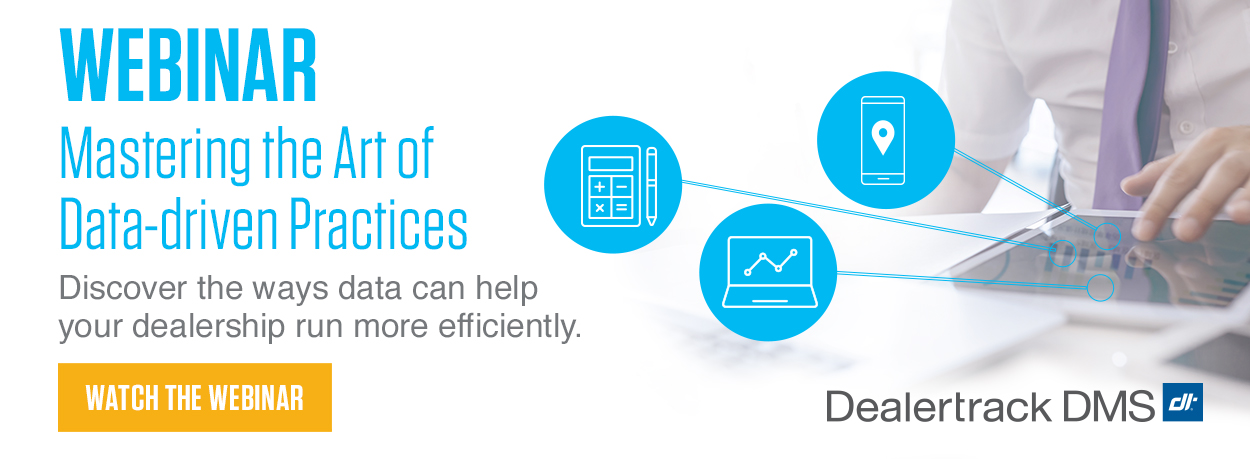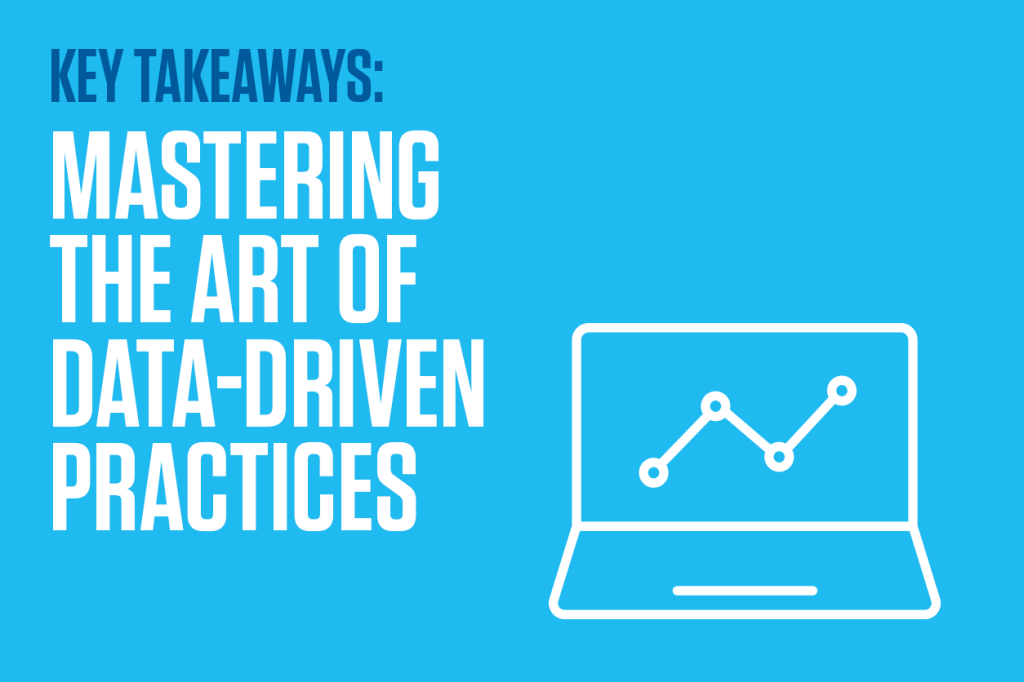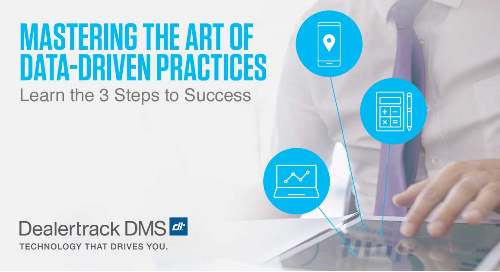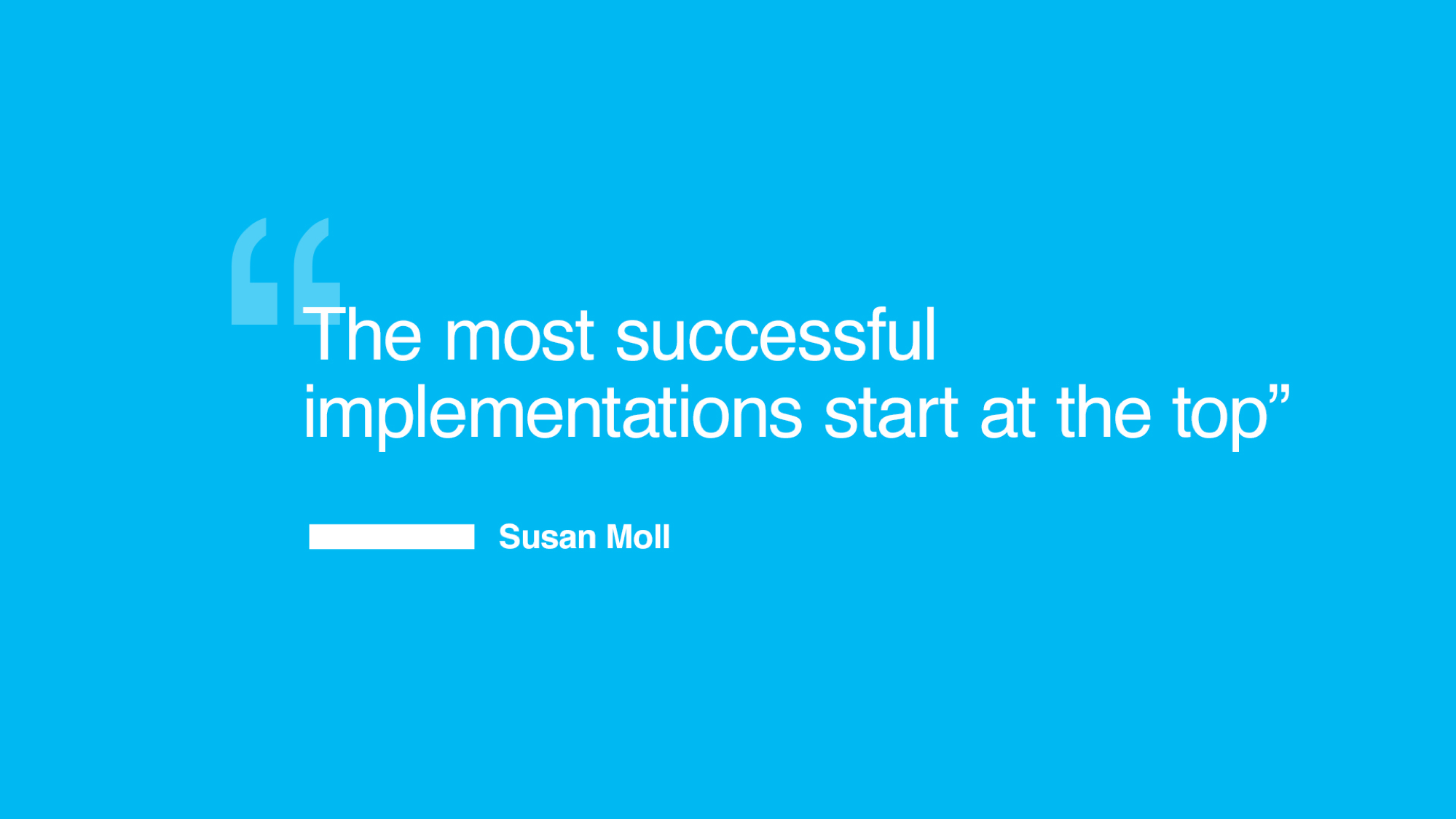Leverage data-driven practices with these important tips to make your dealership more profitable.
Data is everywhere in your dealership. Knowing what to do with it and using it to become successful can be overwhelming. Your dealership won’t become a data-focused institution overnight as it takes a real mindshift, from leadership-led initiatives down to the showroom floor, to make it a reality. But, with practice, it is possible to instill the right mindset, practices, and focus to achieve it.
In our recent Auto News webinar, Vice President and General Manager of Dealertrack DMS, Mandi Fang, and Director of Digital Marketing from Autotrader US, Kevin LeSage, shared tips for mastering the art of data-driven practices.
The Data-Driven Culture
Fostering a business that embraces data is the first, and most crucial, step for dealerships. If you don’t have the right mindset, any technology, any amount of training, and certainly your vendor relationships, will not help you achieve your goals. You have to be certain your team is aligned to the following key drivers in order to build a data-driven culture:

Define Your Objectives
Don’t create objectives based only the data you think you can get from the tools you use, but rather focus on the top 3-5 things you want measure in order to drive different results.
Define the Right People, Processes, Tools
Look at the data that you already have and find out which data sources provide the most valuable information. This will help you hone in on the data you should be looking at and weed out the extra noise.
Next you’ll need to define a process for calculating each KPI, then assigning ownership of each KPI, and finally establishing a regular cadence for updates.
Measure, Monitor, Manage
You must consistently measure and monitor your progress to make sure the data being collected is leading you down the right path and ensure nothing is standing in the way of success.
Download the PDF: Key Takeaways: Mastering the Art of Data-driven Practices

Better Focus. Better Results.
When your dealership is able to turn data into insights, prepare for the “magic” to happen. It’s no secret that people proficient in data technology get excited about the results. That’s because data has the tremendous potential to drive success for your business. Once you’re ready to roll, here are three top areas to focus, first.
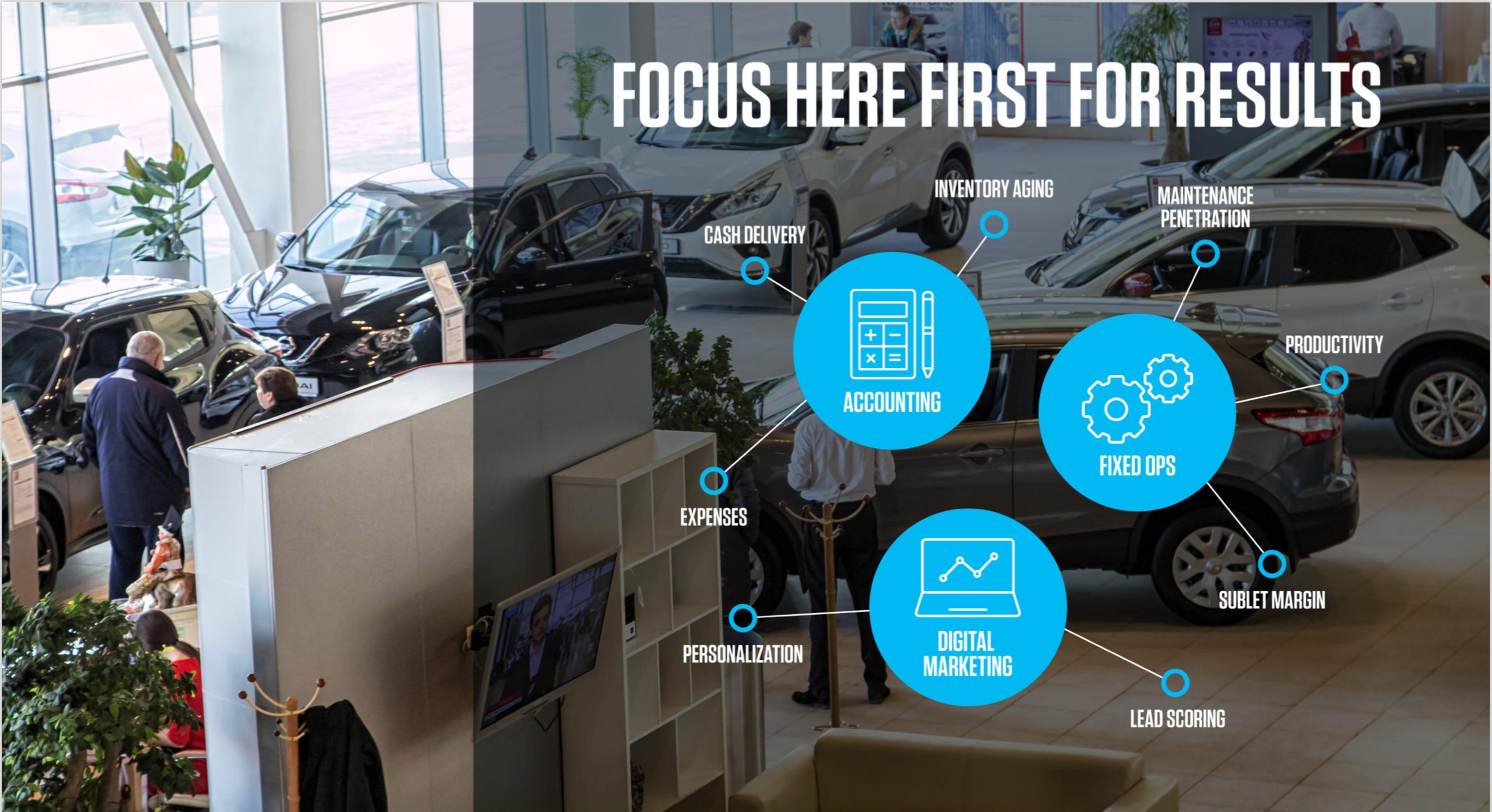
Accounting
Accurate, real-time data provided by your DMS is not only important for creating a picture of the past – but provides the framework for your accounting team to deliver process-optimizing financial data relevant to your dealership’s future.
It’s so important for dealers to start digitizing their Accounting functions in order to remain competitive. The right DMS is the foundation for automating and streamlining inefficient processes.
Fixed Ops
Dealers are starting to shift their focus to finding ways to drive more sales through fixed ops since it’s such a major driver of profit for your dealership. Around half of a dealership’s profit comes through fixed operations. Tracking KPI’s is a great way to maintain peak efficiency as long as your Fixed Ops team is onboard to do it.
Digital Marketing
While Digital Marketing is a very broad topic, dealers can start by focusing first on two main areas:
- Traffic Scoring – monitoring the engagement or the quality of each and every visit that you’re driving to your dealership’s website.
- Personalization – leveraging data to create custom experiences for customers who visit your website.
Adopting a data-driven approach can lead to greater success for your dealership. While this may seem obvious, the path to profitability can be confusing. Knowing how and where to begin takes experience and guidance. Start here with tips from the experts. Watch the full webinar and download the PDF for Key Takeaways.
Get the PDF: Key Takeaways: Mastering the Art of Data-Driven Practices
